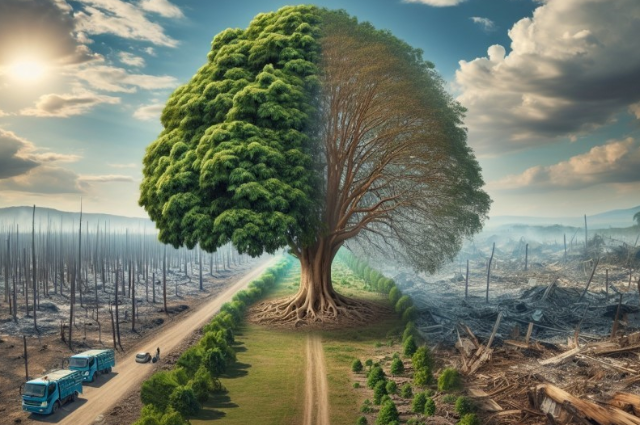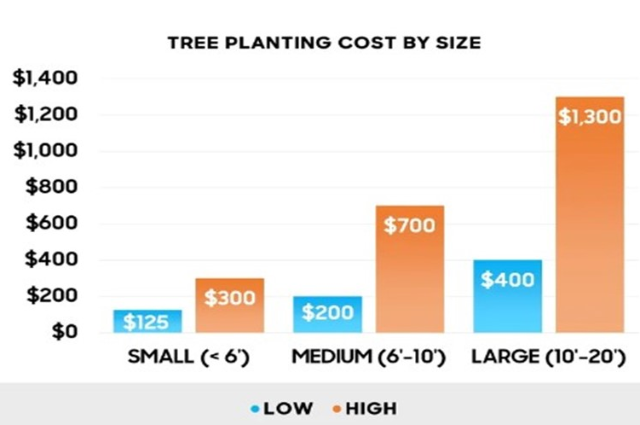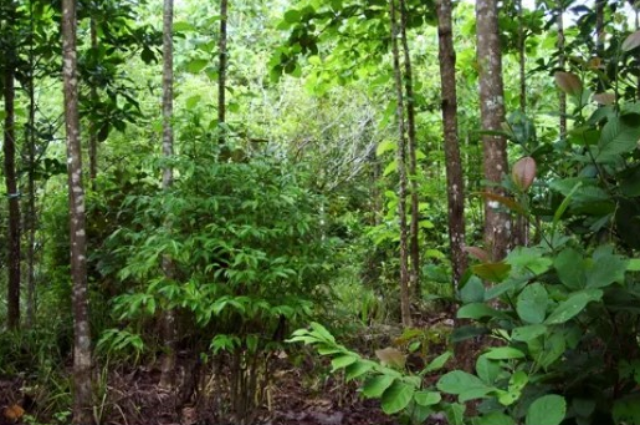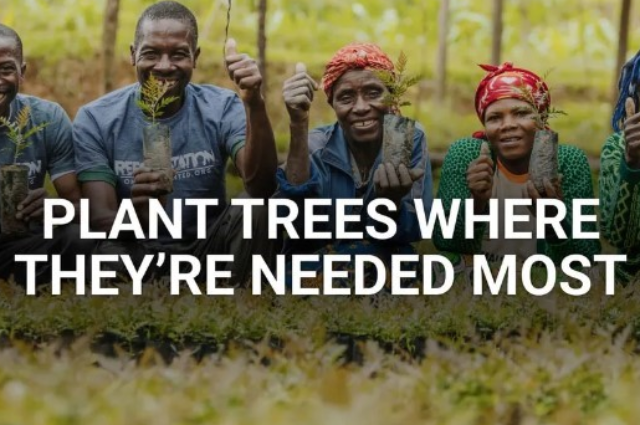
INTRODUCTION
The idea of planting trees as a cure-all for climate change challenges the effectiveness of traditional reforestation methods in facing contemporary environmental crises. While reforestation aims to improve air and water quality, mitigate the urban heat island effect, and provide spaces for recreation and wildlife, the largest threat to forests remains agriculture, which is accountable for almost 90% of global forest loss [3]. Moreover, the approach of merely planting trees often overlooks the necessity of creating ecosystems resilient enough to adapt to future climate changes, rather than just attempting to revive a previous state of ecological balance [1]. This article delves into the myths surrounding tree planting, highlighting the inefficiencies and unintended consequences that can arise from poorly planned reforestation projects, including the development of monocultures and the overlooked importance of ecosystem management and biodiversity. It will explore the financial and ecological costs of tree planting, the phenomenon known as the Cobra Effect in environmental policies, and advocate for context-specific reforestation and the valorization of grasslands as equally important ecosystems [2]. By examining practical solutions and alternatives to traditional tree planting, this article aims to present a roadmap towards real sustainability efforts that go beyond the simplistic notion that planting trees alone can combat climate challenges.
The Misconception of Tree Planting as a Climate Solution
While tree planting is often highlighted as a major solution for climate change, it is crucial to understand its actual efficacy and limitations. Trees can only offset a fraction of current carbon emissions, as forests absorb 16 billion metric tons of CO2 annually, but human activity emits 36 billion tons of CO2 per year [1]. This discrepancy highlights the inadequacy of relying solely on tree planting for significant carbon mitigation.
Variability in Carbon Sequestration
Different types of forests sequester very different amounts of carbon. For instance, the potential carbon impact of restoration projects varies widely depending on the specific restoration plans [1]. Not all tree planting efforts are equal, and the focus should be on the quality and type of forests being regenerated.
Natural Regrowth vs. Plantations
Allowing forests to regrow naturally has proven to be more effective than planting single-tree commercial crop plantations. Studies show that naturally regrown forests can sequester 42 gigatons of carbon by 2100, compared to only 1 gigaton stored by plantations [1]. This stark difference underscores the importance of supporting natural forest regrowth over commercial tree planting initiatives.
Socio-Political Challenges
The real uncertainties in maximizing the benefits of tree planting are not scientific but socio-political. Integrating large-scale reforestation into societies in a way that gains widespread acceptance remains a significant challenge [2]. This aspect is often overlooked in discussions about tree planting as a climate solution.
Comprehensive Climate Solutions
The primary solution to climate change involves halting the emission of greenhouse gases, primarily by replacing fossil fuels with renewable energy sources [2]. Moreover, protecting existing forests and avoiding deforestation are more immediate, cost-effective, and impactful climate actions than planting new trees [3]. The focus on tree planting can sometimes distract from these more crucial efforts [4]. By understanding these nuances, it becomes evident that while tree planting has its place, it is not the panacea it is often made out to be. More comprehensive and integrated approaches are necessary to tackle the complex issue of climate change effectively.
The Problem with Monocultures in Reforestation Efforts
Monoculture plantations, often consisting of fast-growing species like acacia and eucalyptus, account for nearly half of the forests promised in reforestation pledges. However, these monocultures drastically reduce biodiversity and store considerably less carbon compared to natural forests [5].
Impact on Biodiversity and Carbon Storage
Natural forest restoration not only supports significant carbon sequestration but also enhances biodiversity, which is critical for ecological balance [5]. In contrast, monoculture timber plantations, while useful in certain contexts, should complement rather than replace natural forest restoration efforts [5].
Environmental and Ecological Drawbacks
The introduction of non-native species through monoculture plantations disrupts local ecosystems, often leading to reduced water availability and loss of biodiversity [6]. Furthermore, these plantations typically replace original forests, resulting in carbon emissions from disturbed soil [6].
Water and Climate Issues
Monoculture tree plantations exacerbate issues related to water scarcity, desertification, and climate instability. These plantations can alter local climates and increase water costs, impacting both the environment and local communities [7]. Social Impacts
The expansion of monoculture plantations often infringes on the land rights of indigenous peoples and fails to provide any substantial benefits to local communities, which can lead to social tensions and inequity [7].
Ecological Functioning
Monoculture plantations disrupt the global water cycle and affect climate regulation, which are vital for maintaining the planet's health. These plantations can severely impede the recovery of natural forests and should be managed to ensure they do not replace old-growth forests and other critical habitats [7] [8].
Restoration and Management Strategies
Active restoration strategies, such as thinning and enhancement planting, are necessary to facilitate the natural succession of forests, helping to restore ecological balance and enhance forest recovery [8]. Encouraging multicropping systems in place of monocultures can significantly improve land productivity and biodiversity, offering a more sustainable alternative [9].
Financial and Ecological Costs of Tree Planting

The financial implications of tree planting are substantial and multifaceted. By 2055, it's projected that tree planting and preservation efforts will require an annual investment of approximately $393 billion to contribute significantly to emissions reductions necessary for limiting climate change to 1.5 degrees Celsius [10]. This figure emphasizes the scale of financial commitment needed to utilize afforestation as a climate change mitigation strategy.
Additionally, the cost of preventing 0.6 gigatons of carbon dioxide from being released through these efforts is estimated at $2 billion per year [10]. This highlights the economic burden that comes with large-scale environmental initiatives. In the United States, managing existing forestland and afforestation are considered pivotal strategies, further underscoring the financial stakes involved in these ecological interventions [10].
Urban environments also bear significant costs related to tree maintenance. For instance, the annual cost of maintaining a public tree in areas like Los Angeles County and the City of Santa Monica is around $96 [11]. However, removal costs, which can account for 28% to 60% of a tree’s annual maintenance expenses, add another layer of financial consideration [11]. The overall environmental benefits provided by a mature urban forest of 14,337 street trees in Council District 8, quantified at $111,810 per year, must be weighed against the structural value of these trees, estimated at $50.6 million [11].
Monitoring these projects for community and biodiversity outcomes can substantially increase costs, potentially tripling the monitoring budget to account for 10-20% of the total project expense [12]. The effectiveness of urban tree planting projects in carbon credit markets also varies significantly depending on the community type and geographic location, with carbon assimilation rates playing a crucial role in determining cost-effectiveness [13].
The financial burden is compounded by the increasing costs of afforestation and avoiding deforestation as strategies to meet emissions targets [14]. Economically efficient forest carbon sequestration pathways are influenced by expectations of future mitigation policies and incentive structures, suggesting that increases in carbon prices and government investments could drive more significant climate mitigation efforts from the forest sector [14].
Despite these investments, the prevalence of failed reforestation projects highlights the challenges and inefficiencies in current practices, with scientific analyses of these failures being rare [3]. This points to a critical need for reevaluation and adjustment of strategies to ensure both financial viability and ecological effectiveness in tree planting initiatives.
The Cobra Effect in Environmental Policies

Understanding the Cobra Effect
The Cobra Effect illustrates how solutions can exacerbate the problems they intend to solve, a concept derived from a historical incident during Colonial British rule in India. Authorities offered a bounty for each dead cobra to reduce the snake population, leading to people breeding cobras to earn rewards [21][19][17]. This anecdote underscores the unintended complexities that can arise from well-meaning policies.
Modern Manifestations
In contemporary settings, the Cobra Effect surfaces in various forms:
- Driving restrictions in Latin America intended to reduce pollution instead increased it, as people bought more cars to circumvent the system [20].
- Incentives for opening bank accounts led to numerous unused accounts, complicating financial management rather than simplifying it [20].
- Efforts to eradicate poppy cultivation in Afghanistan inadvertently expanded it, as eradication measures increased the crop's street value [20].
Environmental Policy Implications
Environmental strategies often suffer from the Cobra Effect, leading to adverse outcomes:
- The I-70 Viaduct Project in Denver aimed at reducing traffic congestion but increased local pollution levels [18].
- Stream management efforts like those in Lena Gulch and Maxwell Tributary intended to improve water quality but disrupted local ecosystems [18].
Choosing Effective Metrics
Selecting appropriate Key Performance Indicators (KPIs) or Operational Effectiveness Criteria (OEC) is vital in environmental policy to prevent outcomes that contradict original goals [17]. Without careful consideration of these metrics, policies may result in increased pollution, resource depletion, or environmental degradation [19].
The Pandemic Example
The COVID-19 pandemic revealed the Cobra Effect in public health measures. Immediate lockdowns intended to control the virus spread led to civil disobedience, panic buying, and significant economic and social shifts [16].
Perverse Incentives
- Perverse incentives are specific types of the Cobra Effect where incentives create harmful results. Examples include:
- Hanoi's policy to control rat populations that led to the breeding of rats [15].
- Indonesia's biofuel policies intended to reduce carbon emissions but led to increased deforestation [15].
- Educational reward systems that inadvertently encouraged cheating among teachers [15].
Understanding and anticipating the Cobra Effect is crucial in crafting policies that do not backfire, ensuring that solutions do not turn into new problems.
Success Stories in Context-Specific Reforestation

In Brazil's Atlantic Forest, the Black Lion Tamarin Conservation Program has been a beacon of success, restoring a 1,000-hectare forest corridor that links two vital forest remnants. This strategic reforestation has led to a remarkable rebound in the black lion tamarin population, increasing from a mere 100 individuals to approximately 1,800, demonstrating the power of targeted habitat restoration [22]. The initiative also incorporated significant community involvement, engaging thousands of rural community members and landless families. These participants gained not only knowledge but also food security, income, and a strong sense of ownership and shared responsibility for wildlife protection and forest conservation [22].
In Kenya, the Mirema Community Forest Association has made significant strides in forest regeneration. Over five years, they have successfully planted at least 300,000 trees, achieving a survival rate of 70%. This effort has revitalized the Mirema Forest, previously denuded by extensive logging for charcoal. The restored forest now serves as a vibrant green source for many streams feeding the Kuja River, mitigating flood impacts in the region [23].
Another notable initiative is DUAPA (Good Tree), a youth-led reforestation project operating across five African countries. DUAPA focuses on restoring critical ecosystems and monitoring plant growth to tackle the root causes of land degradation. An integral part of their strategy includes expanding access to clean cooking solutions for households and schools reliant on wood, thereby integrating environmental restoration with community needs [24]. In collaboration with the Clean Cooking Alliance, DUAPA is exploring ways to accelerate context-specific transitions to clean cooking methods that complement and enhance their reforestation efforts [24].
Community engagement and support for local livelihoods have been identified as crucial elements in the success of reforestation projects. These initiatives not only restore ecological balance but also provide sustainable benefits to local communities, thereby ensuring long-term success and support for the projects [3]
In Rwanda, the Wildlife Conservation Society's project in Nyungwe Forest National Park is another success story. This project focuses on regenerating approximately 6,000 hectares of forest that had been lost to fires set by poachers and wild honey collectors in the 1990s. By creating jobs for local people, the project not only aids in forest restoration but also fosters community involvement and economic benefits, further promoting sustainable practices [25].
The Role of Native Trees and Biodiversity

Importance of Native Trees in Ecosystems
Native trees play a crucial role in maintaining ecological balance and enhancing biodiversity. They are well adapted to their environment, which allows them to thrive and provide numerous benefits to local ecosystems [28]. Native species support a larger number of local wildlife species by providing essential food and shelter, contributing to a richer and more stable biodiversity [28].
Advantages of Biodiverse Plantings
Planting a diverse mix of native species significantly enhances the ecological functionality of reforested areas. Such biodiverse plantings not only help in carbon sequestration but also offer cobenefits like improved human health and wellbeing [26]. They provide increased resilience against environmental stressors like invasive species or climate extremes, ensuring more stable carbon storage and overall ecosystem health [26].
Ecological and Social Benefits of Native Trees
Native trees contribute to the protection of watersheds and freshwater resources, which are crucial for both ecological balance and human use [27]. They also improve the continuity of the natural landscape, helping to connect forest fragments and expand habitats for threatened native plant and animal species [27]. Additionally, these trees secure the livelihoods of local communities by linking protected areas with natural forests, thereby supporting both conservation and community development [27].
Challenges with Exotic Species
While reforestation efforts often prioritize exotic trees due to their rapid growth and easy germination, these species can have detrimental effects on the local ecosystem. Exotic species monocultures can alter natural habitat conditions, disrupt water balances, and affect nutrient cycles, often failing to support the biodiversity of native species [29]. This highlights the importance of making well-informed species selections based on ecological and socioeconomic factors [29].
Reforestation and Its Impact on Deforestation
Reforestation programs are essential for offsetting the effects of deforestation. However, the success of these programs heavily depends on the choice of species planted. Research indicates that focusing on native species can enhance the genetic diversity of urban forests, thereby improving the resilience of neighborhood canopies and contributing to more effective conservation efforts [28][29].
Comparative Benefits of Grasslands and Forests
Grasslands have emerged as vital ecosystems, often overshadowed by the more commonly celebrated forests for their role in carbon sequestration. However, recent studies have highlighted the unique and critical benefits of grasslands, especially in contexts like wildfire-prone areas [30].
Carbon Storage and Climate Adaptability
Grasslands store most of their carbon underground in roots and soil, unlike forests, which store carbon primarily in woody biomass and leaves [30]. This underground storage method in grasslands makes them more resilient to climate change impacts, such as fires, because the carbon remains sequestered in the soil even during such events [30]. In scenarios where aggressive emissions reductions are not in place, grasslands have shown to store more carbon than forests, making them incredibly significant in the fight against climate change [30].
Grassland Management and Carbon Sequestration
Innovative management techniques are being adopted by ranchers to enhance the carbon storage capabilities of grasslands. These include practices that promote reliable rates of carbon sequestration, which are crucial for meeting emission-reduction goals [30]. Additionally, properly managed grazing has been proven to increase soil carbon content, further leveraging the carbon sink potential of grasslands [31].
Environmental Benefits
Beyond Carbon Grasslands also play a crucial role in preventing soil erosion, buffering against extreme weather, and managing stormwater [31]. These benefits are essential for maintaining ecological balance and supporting biodiversity. Grasslands cover approximately one-third of Earth's land area and act as significant reservoirs of biodiversity and carbon, storing about a third of all the carbon found on land [32].
The Challenge with Turfgrass
While grasslands offer numerous environmental benefits, it's important to note the challenges associated with certain types of grassy areas, such as turfgrass. The maintenance of turfgrass, including the use of lawn equipment and chemicals, has turned it into a significant source of greenhouse gas emissions [31]. This highlights the need for careful management and restoration of grasslands to their more natural conditions to maximize their environmental benefits [31].
Grasslands vs. Forests in Carbon Dynamics
Comparatively, forests absorb around 30% of carbon emissions, which is significant, but the protection of this carbon is contingent upon managing threats like severe wildfires and promoting drought-resistant tree species [32]. Grasslands, with their capacity to sequester carbon even during adverse conditions like fires, provide a compelling alternative or complementary approach to forests in carbon dynamics and ecosystem management [30]. These insights into the comparative benefits of grasslands and forests underscore the importance of integrating grassland conservation into climate strategies. Such integration not only supports carbon sequestration goals but also enhances biodiversity and ecological resilience across various landscapes.
Practical Solutions and Alternatives to Tree Planting

Natural Forest Regeneration
Natural Forest Regeneration allows trees to grow back spontaneously or with limited human intervention on lands where the original forest cover was cleared. This method has been shown to absorb 40 times more carbon than plantations and provides a habitat for a more diverse range of species. It is also significantly cheaper than active tree planting, making it a practical and costeffective solution [25].
Assisted Natural Regeneration
Assisted Natural Regeneration involves some human intervention, such as the removal of competing plants or grazing animals, to kickstart natural forest regrowth processes. This method can be crucial in areas where natural regeneration is hindered by invasive species or previous land use practices [25].
Soil Retention and Water Management
Addressing soil retention and improving water management can significantly reduce pollution and mitigate global warming. Techniques that enhance these aspects of land management contribute to more sustainable environmental stewardship [9].
Innovative Land Management Practices
- Fallowing fields and planting legume crops improve soil quality and enhance carbon sequestration [9].
- Rotational farming systems increase soil carbon and optimize land use, making agricultural practices more sustainable [9].
- No-till and low-till cropping systems help maintain the integrity of topsoil, reducing erosion and maintaining carbon levels in the soil [9].
Coastal and Wetland Ecosystem Restoration
Restoring coastal weed beds, mangrove systems, and reef systems enhances carbon capture capabilities. These ecosystems are critical in sequestering carbon and serve as buffers against coastal erosion and storm surges [9].
Urban Planning for Sustainability
Encouraging denser city living paired with ample green spaces can significantly reduce carbon footprints. Urban planning that integrates green spaces effectively can help in cooling urban areas, reducing air pollution, and managing stormwater [9].
Diversifying Energy Sources
Promoting a variety of power and fuel sources, including renewables, can decrease reliance on fossil fuels, thereby reducing overall carbon emissions. This diversification is essential for transitioning to a more sustainable energy landscape [9].
Advances in Carbon Capture Technologies
Investing in research for Carbon Capture and Sequestration (CCS) and Carbon Capture and Utilization (CCU) technologies can lead to innovative solutions that reduce atmospheric CO2 levels. These technologies offer long-term solutions for carbon storage and utilization [33].
Promoting Sustainable Agriculture
- Implementing organic farming practices can increase the soil's carbon sequestration capabilities [9].
- Reducing the consumption of animal-based products, particularly beef, can lead to significant reductions in carbon emissions [9].
Alternative Biomass Solutions
Exploring other forms of biomass, such as fast-growing algae, bamboo, and hemp, provides additional avenues for natural carbon sequestration. These resources can be cultivated sustainably and have various industrial applications, further reducing reliance on traditional carbon-intensive materials [33]
Conclusion
The exploration into the effectiveness of tree planting as a global climate change solution unveils a complex narrative far beyond the simplistic idea that more trees equal a healthier planet. It has become evident that while trees have their role in carbon sequestration and providing ecological benefits, the focus must shift towards more comprehensive climate solutions that address the root causes of climate change, including halting greenhouse gas emissions and protecting existing forests. Context-specific reforestation, valuing grasslands, and embracing biodiversity are critical for establishing resilient ecosystems capable of adapting to our changing world. These approaches, coupled with innovative land management and restoration techniques, highlight the necessity of a multi-faceted strategy in combating environmental degradation.
As we conclude, it's imperative to acknowledge that the path to mitigating climate challenges requires a collective shift in perspective and action. The emphasis on native species restoration, grassland conservation, and the integration of community-based strategies underscores the importance of adopting context-specific solutions that align with ecological and societal needs. The journey towards a sustainable future demands not only the reevaluation of our reforestation practices but also a deeper commitment to innovative, holistic approaches to environmental stewardship. This article advocates for a balanced, informed view on tree planting and ecosystem restoration, aiming to inspire further research, policy development, and community engagement in pursuit of genuine sustainability and resilience against climate change.
. . .
References:
- https://www.sciencenews.org
- https://www.bbc.com
- https://www.devex.com
- https://climatefeedback.org
- https://e360.yale.edu
- https://earthly.org
- https://www.activeremedy.org
- https://www.frontiersin.org
- https://www.quora.com
- https://news.ncsu.edu
- https://www.treepeople.org
- https://www.scientificamerican.com
- https://www.fs.usda.gov
- https://climateadaptationplatform.com
- https://medium.com
- https://aihc-assn.org
- https://www.linkedin.com
- https://mhfd.org
- https://www.formpl.us
- https://www.jamesvermillion.com
- https://www.linkedin.com
- https://thinkwildlifefoundation.com
- https://news.mongabay.com
- https://cleancooking.org
- https://www.bbc.com
- https://nph.onlinelibrary.wiley.com
- https://www.forestfoundation.ph
- https://www.nature.org
- https://esajournals.onlinelibrary.wiley.com
- https://climatechange.ucdavis.edu
- https://sustainingourworld.com
- https://blog.cabi.org
- https://www.dezeen.com
